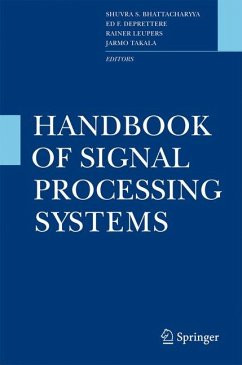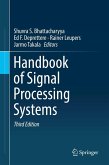This handbook provides:
- A comprehensive overview of signal processing systems
- Standalone, complete reference to signal processing systems
- A comprehensive index for ease of use
- An extensive bibliography for further reading
This handbook is essential for those involved in R&D in the design, architecture, and implementation of a wide array of signal processing systems. This handbook is also suitable as a first point of entry to the field for undergraduate and post-graduate students in engineering, computer sciences, and system engineering.
Dieser Download kann aus rechtlichen Gründen nur mit Rechnungsadresse in A, B, BG, CY, CZ, D, DK, EW, E, FIN, F, GR, HR, H, IRL, I, LT, L, LR, M, NL, PL, P, R, S, SLO, SK ausgeliefert werden.
"This handbook provides a reference on key topics in the design, analysis, implementation, and optimization of hardware and software for signal processing systems. ... We hope that this handbook will serve as a useful reference to engineering practitioners, graduate students, and researchers working in the broad area of signal processing systems. It is also envisioned that selected chapters from the book can be used as core readings for seminar- or project-oriented graduate courses in signal processing systems." (zbMATH, Vol. 1285, 2014)









